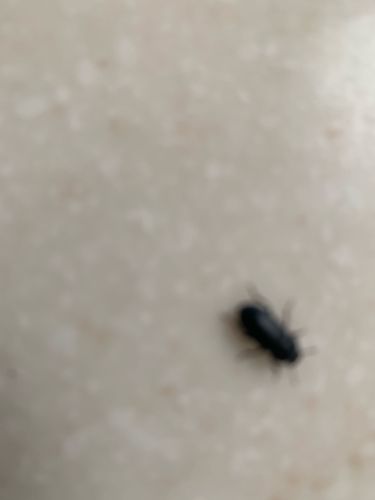Dermestid Beetle (likely Black Carpet Beetle)
Scientific Name: Likely *Attagenus unicolor* or a related species within Dermestidae
Order & Family: Order: Coleoptera, Family: Dermestidae
Size: Adults typically range from 2-5 mm (0.08-0.2 inches) in length. Larvae can be slightly larger.

Natural Habitat
Indoors, they are commonly found in homes, museums, warehouses, and other structures where suitable food sources are present. They prefer dark, undisturbed areas such as in attics, wall voids, under carpets, or inside pantries. Outdoors, they can be found in bird nests, animal carcasses, or bee/wasp nests.
Diet & Feeding
Dermestid beetles, especially the black carpet beetle, are known to feed on a wide variety of animal and plant products. This includes wool, feathers, leather, furs, dead insects, dried meat, dried pet food, cereal products, and even spices. They are scavengers.
Behavior Patterns
Dermestid beetle larvae are typically found in dark, undisturbed areas where their food sources are abundant. Adults are attracted to light and are often found near windows. They undergo complete metamorphosis with egg, larval, pupal, and adult stages. The larval stage is the most damaging.
Risks & Benefits
Potential Risks: Dermestid beetles can be significant pantry pests and museum pests. They can cause damage to stored food products, natural fiber textiles (like wool carpets, clothing), furs, and insect collections. Some people may have allergic reactions to the larval hairs. Potential Benefits: In natural environments, they play a role as scavengers, breaking down organic matter, especially animal remains. They are also used in forensic entomology to estimate the post-mortem interval.
Identified on: 8/28/2025